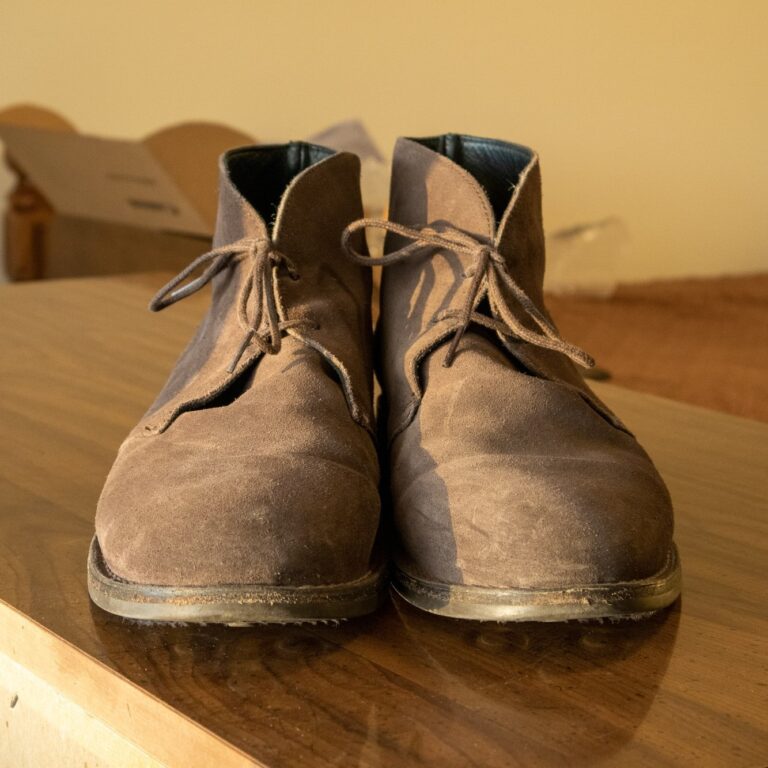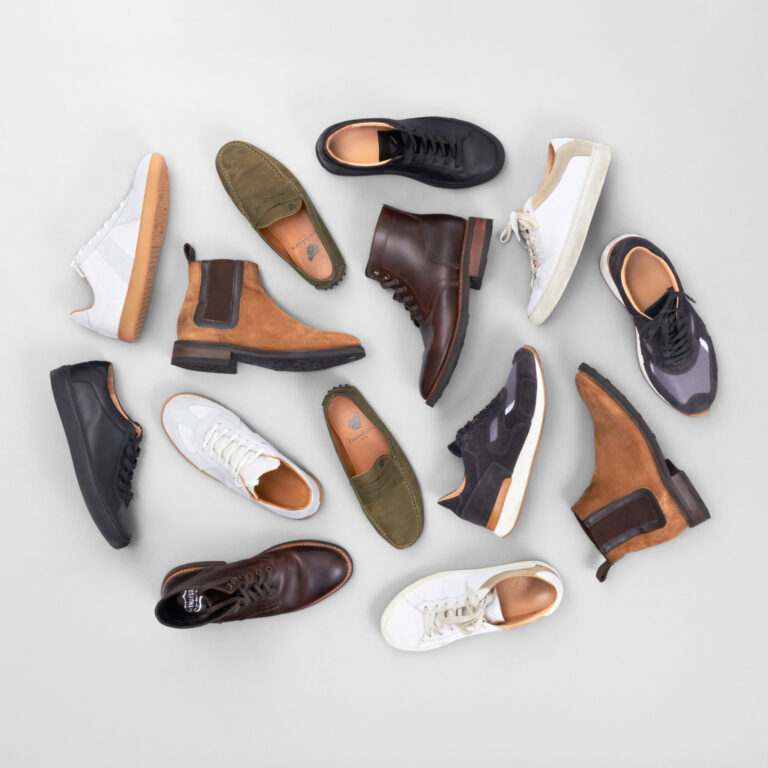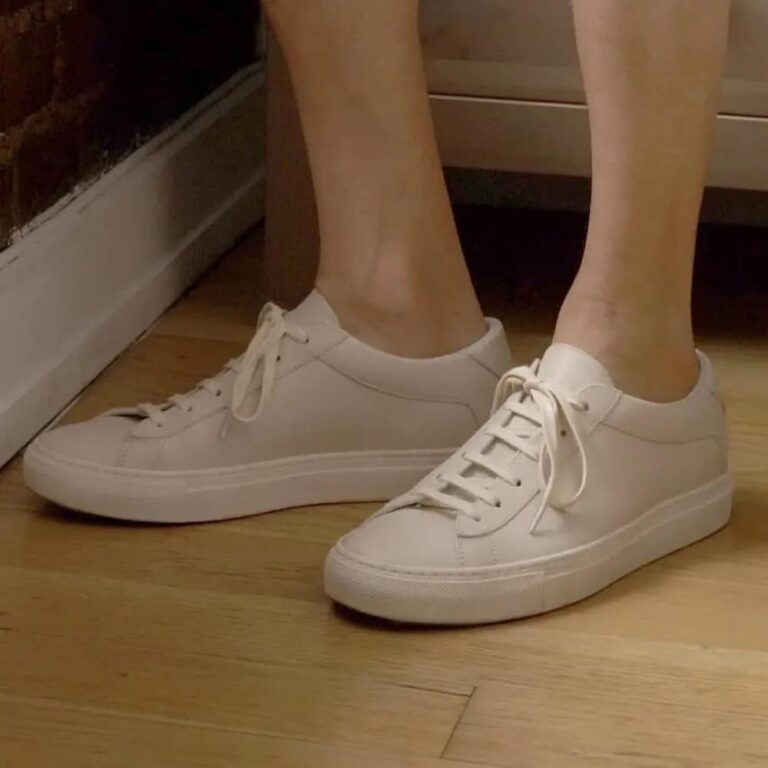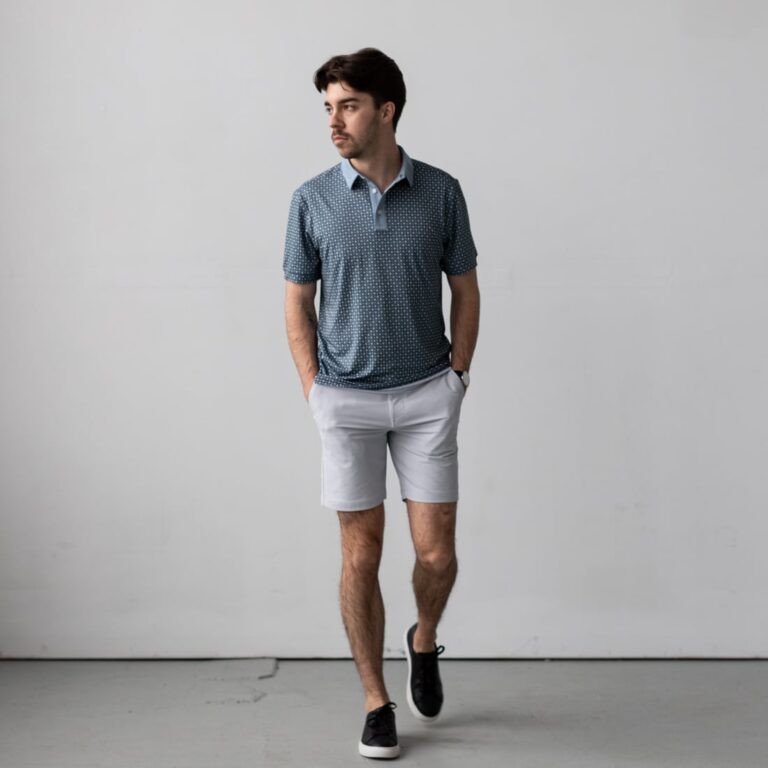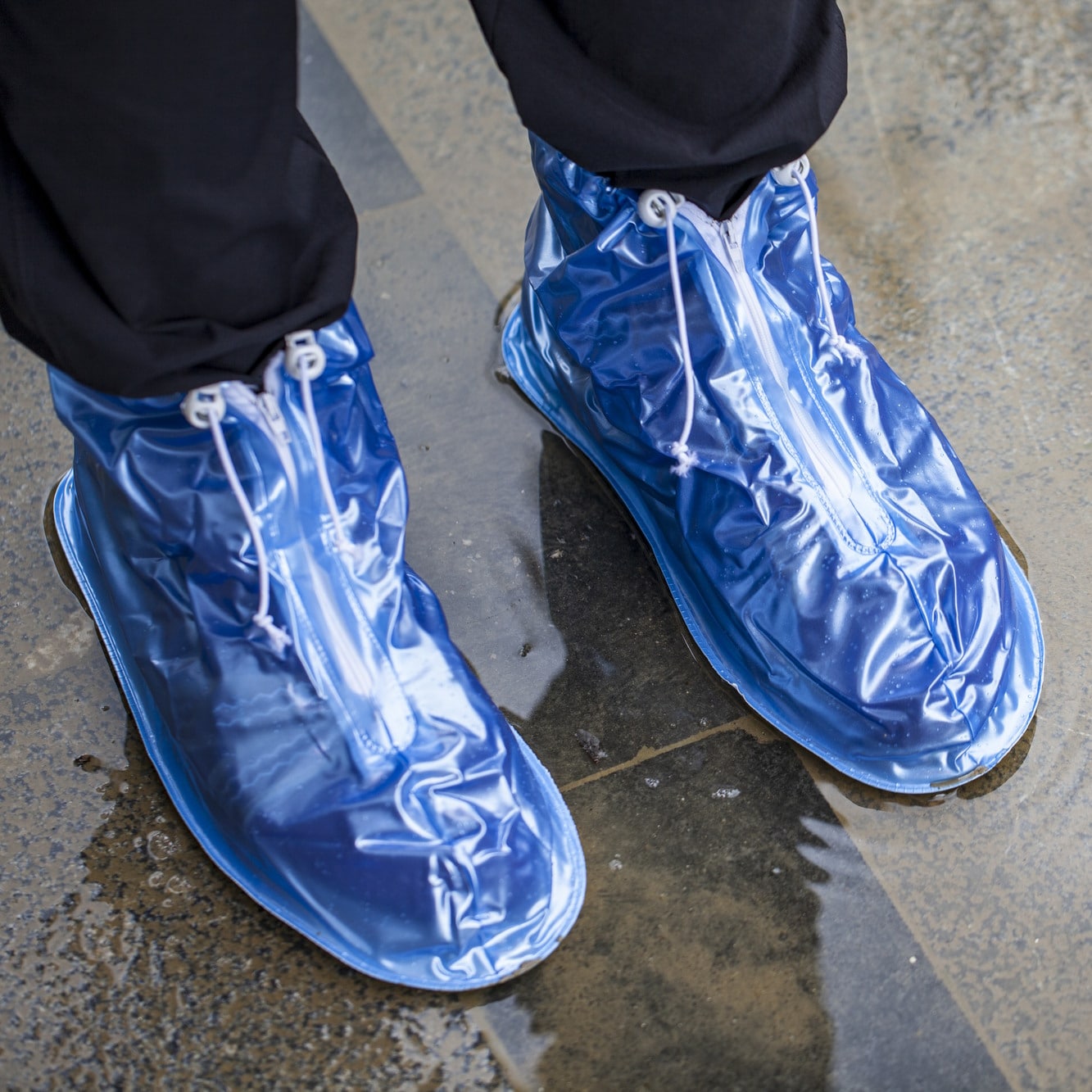
If you’re looking to winter-proof your shoes, I’ve got everything you need to know right here.

I know there are a lot more weather variations to consider during the cold seasons, but winter fashion doesn’t have to be all work and no fun. You don’t always have to forgo your favorite pair of shoes and choose something more utilitarian and appropriate for cold weather.
You might be thinking, what if my favorite boots aren’t warm enough? Or what if it’s snowing? Water can do some major damage to good leather shoes. The answer to these questions is that you can winterize any shoe.
Sure, you’ll never be able to turn a pair of loafers into something that can handle blizzards or deep snow, but you can definitely up its resistance factor for an average December day.
Keep cold feet at bay with these tips on how to winter-proof your shoes.
How to Winterize Shoes
Depending on where you live, winter might mean snow, sleet, rain, ice, slush, or all of the above.
Since the exterior of your upper is the first line of defense, let’s start with how to create a makeshift forcefield for your sneakers, leather shoes, and boots.
Waterproof Your Shoes
Before starting the waterproofing process, cleaning your footwear thoroughly is important.
Waterproofing involves creating an extra layer over the upper.
If your shoes aren’t clean, then there’s going to be extra material in between the upper and that layer, which will affect how well the protection sticks to your upper.
It’s no different than ensuring your phone screen is perfectly clean before installing the screen protector.
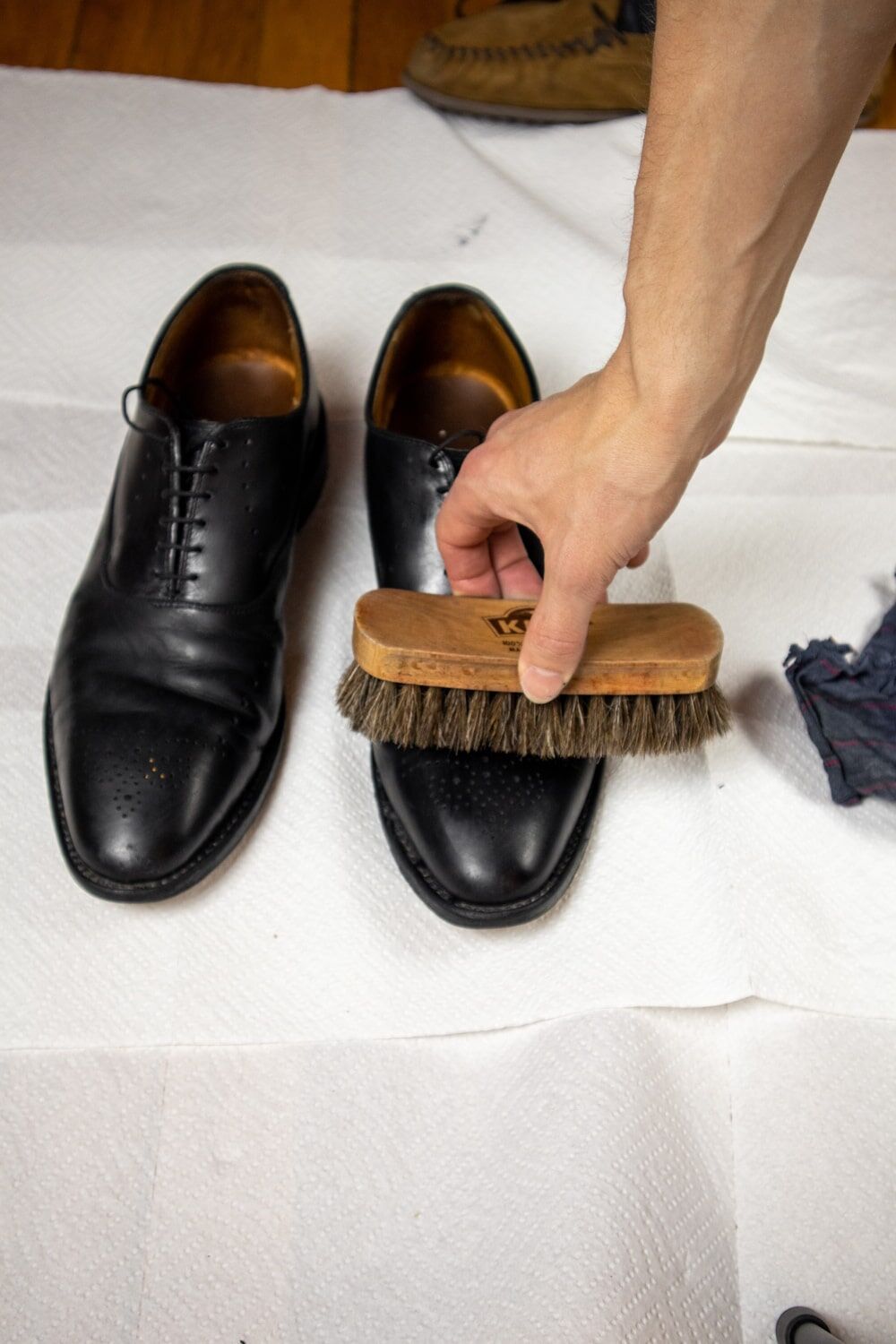
Here are some quick tips on getting your shoes prepped.
Remove the laces before you start cleaning, and wash them separately. There are a lot of nooks and crannies in the eyelet area, and you want to dislodge any debris.
Definitely use a brush on your leather boots, especially if you’ve subjected them to some hikes. And, of course, go in with some leather conditioner for any leather shoes.
Check out our article that goes more in-depth on shoe repair and maintenance.
One of the best waterproofing materials on the market is beeswax. You can use it on any material, and it’s all-natural.
Some highly-rated ones that I personally love include Skidmore’s Waterproofer and Otter Wax.
Use a soft, clean cloth or a flannel buffing cloth for shoes.
Just avoid any dyed materials, as they could potentially stain the uppers. Swirl the cloth on the wax in the tin, then apply it to the surface of the shoes in small circular motions.
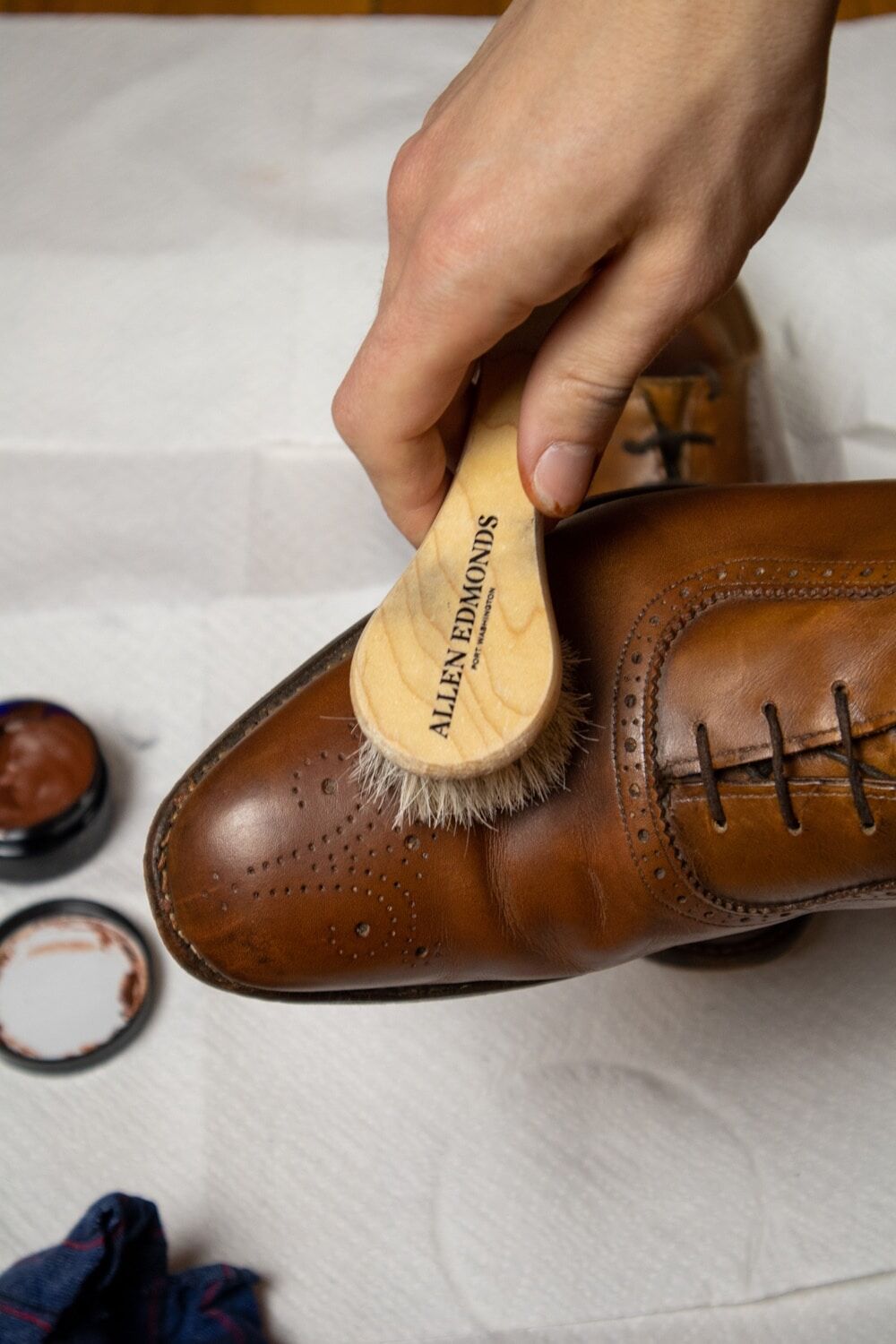
Once you’ve covered the entire surface, allow about half an hour for the wax to settle. You can also add extra layers, but keep in mind that the more layers there are, the more the matte whiteness will start to show.
For leather boots, you can always add another layer of oil on top of the beeswax (after it’s dried and settled, of course!) to get the shine back.
I know that waxing canvas or suede shoes can be kind of complicated. You have to work it in more than you would on leather since the wax shows itself more on textured, matte surfaces.
If you don’t love this or simply don’t have the time, there are great waterproofing sprays out there. One of the best and most high-value ones is the Nikwax waterproofer.
Its main ingredient is a polymer that bonds to the fibers of your shoe individually, which doesn’t affect the aesthetic as much as wax does.
If you prefer a more organic approach, another option is the Art Crep Protectant Spray, which is made of 98% natural materials, including jojoba and coconut.
If you’re in a pinch, say, it’s raining out, you need to wear your leather oxford shoe to a cocktail, and you don’t have any beeswax or shoe protectants, you can use Vaseline.
It’s not as long-lasting, and you might want to bring a napkin to wipe it off the surface when you get to your party. However, it’s better than letting your nice leather get completely wet.
Line the Interiors
Now that you’ve protected the exterior, it’s time to ensure the interior is equally winterized.
Let’s say your favorite boots aren’t exactly a pair of true winter boots. Maybe they’re service boots or even rain boots. It’s likely that they’re not built with an insulated interior.
You can layer some socks, use winter socks, or take it to the next level using boot liners. The LL Bean Snow Boot Liner, for example, adds extra insulation and provides a shearling collar that makes your boot more aesthetically wintery.
Personally, I love the more tactical liners, like this Military Polartec Liner. It’s not as cushy, but it’s designed to keep your feet warm and dry from the inside while also providing an anatomically-specific fit that’s firm, won’t slip, but isn’t overly snug thanks to its flatlock seams.
There are also simple insole liners you can use if you want to focus on the bottoms of your feet. The Warmie Insoles are made of Australian sheepskin and can even be applied to
Wear Overshoes (Galoshes)
The main problem with overshoes is that they definitely change the way your shoes look, so consider this a more utilitarian option.
You can always wear them when you’re on your way to a destination and take them off when you get there — just make sure wherever you’re going has a coat check. Another option is to carry a sturdy waterproof plastic bag inside your backpack or briefcase to stash your galoshes.
Otherwise, make sure wherever you’re going isn’t a place where how you look is of much importance.
Either choice is better than letting your feet freeze, or your shoes get damaged.
Depending on your needs, there’s a wide range of options, from disposable covers that go over the sides and tips to full-on over-the-calf plastic covers that are just one degree away from tying garbage bags over your legs. (Though I suppose you could do that too in an extra desperate situation).
Meanwhile, rubber overshoes protect your shoes from rain, snow, and even potential debris or pebble scratches. You can get ones that cover just the foot portion of your footwear or ones that go all the way up your leg.
I recommend going for the former if all you’re dealing with is moderate rain or even light snow, and the latter if you’ll walk through snow that goes past your ankles.
FAQs
Still, have some questions about winter-proofing your shoes? Here are some common ones:
How Do I Protect My Shoes in the Winter?
Snow and rain can cause major damage to shoes. It’s important to do exactly as this article advises, using beeswax, a protectant spray, or another kind of waterproofing sealant.
Do Shoes Get Ruined in the Cold?
Rubber and leather do a pretty good job withstanding the cold. Just make sure you’re conditioning your leather shoes so they don’t get dry and brittle.
How Can I Make My Shoes Warmer?
You can wear winter socks or apply a boot or shoe liner.
Conclusion: Be Prepared
Now that you know how to winterize your shoes don’t forget to do all the extra work to ensure they recuperate well after a day out in the cold or snow.
You’ll likely be cleaning and conditioning more than you would in the summer. As someone who lives in New York City, I’m always making sure that I’m immediately cleaning any road salt that might end up on my shoes. That material may melt dangerous patches of ice, but it also stains and harms your footwear!
Always make sure you’re allowing wet shoes to dry before wearing them out again. You can use a boot dryer or stuff them with newspapers to mop up excess moisture, allowing them to dry faster.
Whatever you do, don’t expose leather footwear to direct heat to dry them out. This can cause irreparable harm.
Winterizing your shoes and boots is not just about protecting when they go out into the world but making sure they get back to 100% before sending them out into battle again.
What’s your yearly winterizing routine? Let me know in the comment section!
